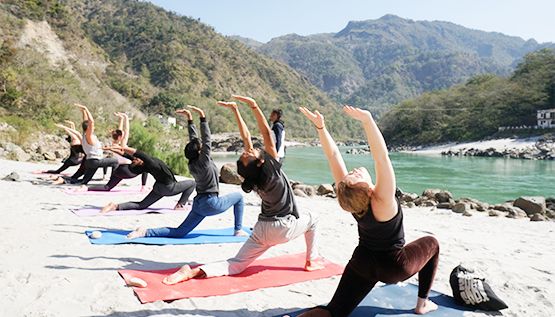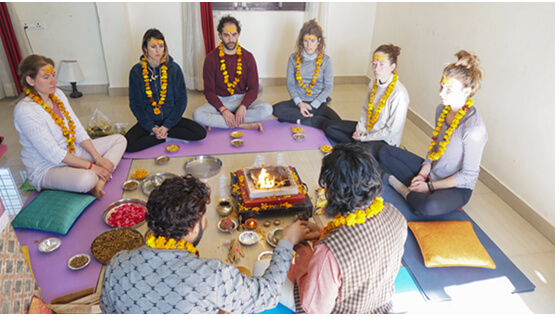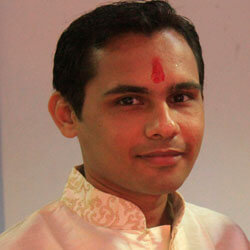The Hightest Level Of Kundalini Energy Is Called Samadhi.
– Siddhant Ji500 HOURS KUNDALINI YOGA TTC
Siddhant School of Yoga is a Registered Yoga School (RYS-500) in Rishikesh Inada approved by Yoga Alliance USA Presents a 500-hour Kundalini Yoga Teacher Training Course to become a complete Kundalini yoga teacher.
The 500-hour Kundalini Yoga TTC with Siddhant School of Yoga, an authentic and traditional yoga school, helps you to understand all about Kundalini Yoga and provides the right practice step by step to experience all the stages of Kundalini yoga to be a professional Kundalini yoga teacher.
The 500-hour Kundalini Yoga Teacher Training Program is a combination of 200 and 300-hour Kundalini Yoga TTC. Dear friend, you can go for a 200-hour and a 300-hour Kundalini Yoga teacher training course separately, but- if you do a 500-hour Kundalini Yoga teacher training course in one go, it can prove to be more useful for you as it gives you the complete information about Kundalini Yoga and also it creates a good yoga habit in you because of its longer duration of yoga practice.
This course is very beneficial for you as it is designed for beginners to advance. The 200-hour Kundalini Yoga TTC, the very first part of this course is good for beginners, the 300-hour Kundalini Yoga TTC, the second part of this course is good for intermediates and the 500-hour Kundalini Yoga TTC is the complete course is very good for advanced ones.You can divide Kundalini Yoga into 2 main parts and 4 sub-parts. They are:
Chakra Meditation can be divided into two steps. They are:
Kundalini Meditation is also divided into two more steps. They are
During the 200-hour Kundalini Yoga TTC, you go through ‘Discover Your Chakras’ and ‘Awaken Your Chakras’. And these both points come in ‘Chakra Meditation’. During the 300-hour Kundalini Yoga TTC, you go through ‘Balancing Your Chakras’ and ‘Awakening Your Kundalini’. And these points come in ‘Kundalini Meditation’. But during the 500-hour Kundalini Yoga TTC, you are going through the complete aspects of Kundalini Yoga.
Kundalini Yoga is all about awakening your chakras and allowing your energy to move from your lower chakras to your higher chakras step by step by following the different yogic methods.
The 500-hour Kundalini Yoga Teacher Training Course provides you all the aspects of Kundalini Yoga step by step in the right sequence. During this yoga course, you will go through some cleaning procedures and many other yogic subjects along with some relaxation and gratitude practice. They are:
Yogic Purification: For purifying your physical body as the right preparation for Kundalini Awakening.
Pranayama: For purifying your Nadis and also awakening your energy with the right breathing exercises along with some other yogic kriyas.
Bandha: For creating the right pressure for awakening your energy.
Mudra: For giving the right path for free energy flow.
Hatha Yoga: For awakening your chakras through your right postures.
Alignment and Adjustment: For aligning and adjusting your body postures to allow your energy to flow towards the chakras.
Yoga Anatomy and physiology: For knowing your chakras and their location in a scientific way.
Ashtanga: For the right preparation for your physical body.
Kundalini Meditation: For awakening the chakras and Kundalini by your mental power.
Gratitude Practice: For knowing the right way to live a Yogic lifestyle.
Kundalini Yoga Philosophy: For knowing all about energy and Kundalini Yoga.
Relaxation Methods: For relaxing yourself after intense practice.
Mantra: For activating your chakras.
Yoga-Nidra: For relaxing your muscles and nervous system.
Basic Ayurveda: For knowing the right food habits for your Kundalini Yoga practice.
Teaching Methodology: To know the right way of teaching Kundalini Yoga.
Teaching practice: To present yourself as a Kundalini Yoga Teacher.
Kundalini Yoga is a result-oriented form of yoga that helps you to create harmony with each aspect of your life. So come and join the 500-hour Kundalini Yoga TTC with Siddhant School of Yoga, gain the right understanding and practice, and become a professional Kundalini Yoga Teacher.
CHOOSE SIDDHANT SCHOOL OF YOGA FOR 500-HOUR KUNDALINI YOGA TEACHER TRAINING COURSE
The 500-hour Kundalini Yoga Teacher Training Course is meant for advanced-level yoga practitioners, who are very passionate about some positive change in their lives. Siddhant School of Yoga is very happy to find this kind of yoga practitioner because our school is a result-oriented yoga school known for its very intense level of practice. We present Kundalini Yoga to give you the right experience of your chakras and Kundalini awakening. Siddhant School of Yoga provides the right practice of Kundalini Yoga for the complete solution of your physical, mental, pranic, and your understanding body. We are working at a very deep level of human personalities and consciousness. We are trying to help all of you to transform yourself completely so that a new kind of understanding and vision arises in you for a better life to help yourself and others. If you are looking for a deep and right Kundalini Yoga Education then come and join our 500-hour Kundalini Yoga Teacher Training Residential Program and transform yourself completely. Here are some points given below to make it clear that Siddhant School of Yoga is the right choice for your 500-hour Kundalini Yoga TTC.

Dear friend, maybe your potential has yet to be discovered. 500-hour Kundalini Yoga with Siddhant School of Yoga is meant to discover your hidden potential. Your higher chakras relate to your higher hidden qualities. So come and join this kundalini yoga course and awaken your highest potential.
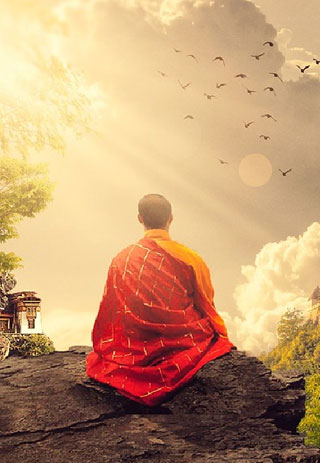
Dear friend, maybe you have a certain amount of physical knots in your physical body, some psychic knots in your mind, some energy blockages in your pranic body, some understanding knots, and some other knots in your whole personality. 500-hour Kundalini Yoga with Siddhant School of Yoga helps to free you from all the knots and blockages.

500-hour Kundalini Yoga TTC with Siddhant School of Yoga is an advanced course and it provides the different kinds of advanced kundalini yogic kriyas in the right sequences so that you can awaken your chakras and experience kundalini energy.

Vishuddha, Ajna, and Sahasrara chakras are the higher chakras opening pathways to cosmic consciousness. Dear friend, the 500-hour Kundalini Yoga Course with Siddhant School of Yoga provides some especially yogic methods to awaken your higher chakras because higher chakras develop your higher qualities.

Dear friend, you may know Kundalini Yoga is all about allowing your energy from lower chakras to higher chakras, and higher chakras are related to Dayana, and Samadhi. This Kundalini Yoga course helps you to enter into the realm of Samadhi.
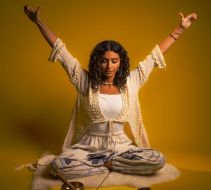
Dear friend, you may know Kundalini Yoga is part of Tantra Yoga. Siddhant School of Yoga presents 500-hour Kundalini yoga TTC helps you to explore the deep connection between Shakti and Shiva, teaching higher Tantric techniques for harmonizing energy within and beyond.
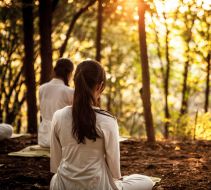
Dear friend, 500-hour Kundalini Yoga TTC with Siddhant School of Yoga helps you to experience of Nada Yoga (sound vibration practices) through Kundalini Yoga practice. It is a great and pleasant experience, you must try to taste this experience. So come and join our Kundalini Yoga TTC.

Dear friend, Kundalini is a secret and sacred word. In our Traditional Indian Yogic System, we rarely say Kundalini, most of the time we call Mother Kundalini. Siddhant School of Yoga presents a 500-hour Kundalini Yoga Teacher Training Course to help you awaken your Kundalini Energy and also Expert supervision ensures that the Kundalini rises harmoniously, preventing disturbances, and leading to a blissful, sustained awakening.
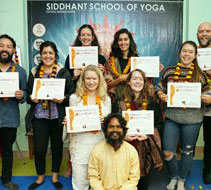
Dear friend, sometimes by the time some deep and sacred teachings are extinct from our society because of many reasons. 500-hour Kundalini Yoga TTC with Siddhant School of Yoga helps you to access sacred teachings, previously reserved for advanced initiates, and enables deep transformation under a true lineage-based system.

The 500-hour Kundalini Yoga Teacher Training Course with Siddhant School of Yoga is not just about learning. It’s about becoming a realized yogi who radiates wisdom, peace, and spiritual power in daily life.
500 Hour Kundalini Yoga Teacher Training in Rishikesh
Upcoming Dates & Fees
| Course Date | Triple Sharing | Shared Room | Private Room | Apply Now |
|---|---|---|---|---|
| 03-01-2026 to 28-02-2026 | USD 1699 |
USD 1999 |
USD 2299 |
Booking Open |
| 03-03-2026 to 28-04-2026 | USD 1699 |
USD 1999 |
USD 2299 |
Booking Open |
| 03-05-2026 to 28-06-2026 | USD 1699 |
USD 1999 |
USD 2299 |
Booking Open |
| 03-07-2026 to 28-08-2026 | USD 1699 |
USD 1999 |
USD 2299 |
Booking Open |
🌟 500-Hour Kundalini Yoga Teacher Training in Rishikesh – Master the Science of Awakening
Elevate your practice and teaching with our comprehensive 500-Hour Kundalini Yoga Teacher Training Course in Rishikesh. Designed for serious yoga practitioners and certified instructors, this advanced-level program integrates authentic Kundalini kriyas, chakra balancing, mantra sadhana, classical pranayama, and deep meditation techniques. Study under experienced Himalayan yogis and receive Yoga Alliance USA certification. Awaken your inner potential in the yoga capital of the world.
Book Your Spot NowNot sure which date works best? Contact us and we’ll help you choose your ideal training month.
Facilities & Inclusions
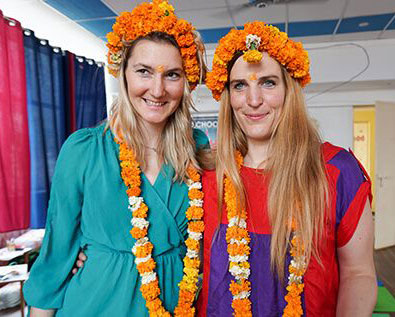 24 days Residential Yoga Course
24 days Residential Yoga Course
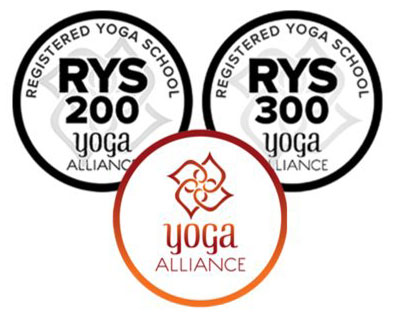 500 hour Yoga Alliance Certification
500 hour Yoga Alliance Certification
 Both Shared / Private Accommodation
Both Shared / Private Accommodation
 Attached Bathroom with Hot water
Attached Bathroom with Hot water
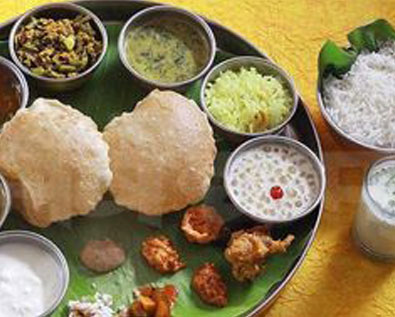 Healthy and Nutritious Meals
Healthy and Nutritious Meals
 Three times Herbal Tea
Three times Herbal Tea
 Filtered Water
Filtered Water
 Free WiFi
Free WiFi
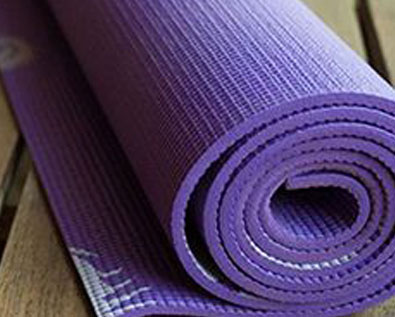 One Yoga Mat
One Yoga Mat
 One Neti Pot
One Neti Pot
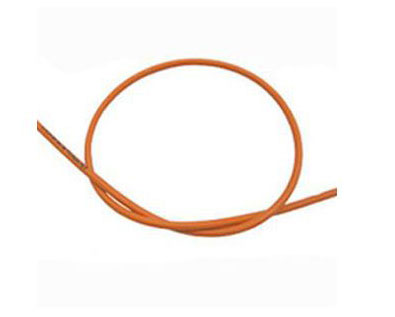 One Rubber Neti
One Rubber Neti
 One Rudraksha Mala
One Rudraksha Mala
 One Yoga Bag
One Yoga Bag
 Course Study Materials
Course Study Materials
 Note Books and Pens
Note Books and Pens
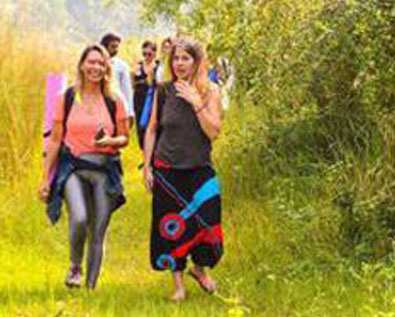 Short Excursion Trip
Short Excursion Trip
 Free Pikc Up from Dehardun Airport
Free Pikc Up from Dehardun Airport
 One Free Ayurvedic Massage
One Free Ayurvedic Massage
Code & Conducts
Read the rules and regulation carefully and obey them during the course
- Discipline is the important part of the training program so the course routine must be strictly followed.
- Please follow all the instructions of the teachers as they all are here to make you grow more.
- Do not leave the class without proper permission of teachers.
- Maintain integrity with other students.
- Do not indulge in alcohol or drugs.
- Smoking is strictly prohibited in the Yoga-School's premises.
- Maintain the safety and cleanliness of the place you will live in.
- Mobile phones, photography and videography are not allowed in the classroom.
- Avoid wearing clothes that expose the body, remember you are in India. Please respect the culture and wear accordingly.
- Always inform the management if you have been suffering from any decrease.
- Always turn off the lights, fans, power plugs, etc., when you are not using them.
- You must inform in advance if they are not taking a meal so that there is no wastage of food.
- For your safety and security, you must come to School before 10 pm at Night.
- Nobody will be allowed to take the meal or tea in the Yoga Hall or in your Room.
Daily Schedule
| Time | Activity |
|---|---|
| 05:30 AM | WAKE UP |
| 06:00 to 06:15 AM | HERBAL TEA AT DINNING HALL |
| 06:15 to 06:30 AM | DAILY YOGIC PURFICATION |
| 06:30 to 07:00 AM | DAILY TRATAK / DAILY OM CHANTING / DAILY GANESH AND GAYATRI MANTRA CHNATING / PRAYER AT YOGA HALL |
| 07:00 AM to 08:00 AM | PRANAYAMA / YOGIC PURIFICATION / BANDHA / MUDRA |
| 08:15 AM to 09:45 AM | HATHA YOGA / ALIGNMENT AND ADJUSTMENT |
| 09:45 AM to 10:30 AM | BREAKFAST AND KARMA YOGA |
| 10:30 AM to 11:30 AM | SPECIAL COURSE OF GRATITUDE FOR PEACE, HAPPINESS AND ALL POSITIVE RESULTS |
| 11:30 AM to 12:30 PM | MANTRA CHANTING / AYURVEDA |
| 01:00 NOON to 02:30 PM | LUNCH AND REST |
| 02:30 PM to 03:30 PM | ANATOMY AND PHISIOLOGY / YOGA NIDRA / RELAXATION |
| 03:30 PM to 04:30 PM | PHILOSOPHY WITH SIDDHANT TO DISCOVER YOGA / PATANJALI / CHAKRA / KUNDALINI / SAMADHI |
| 04:30 PM to 04:45 PM | TEA TIME AND SNACKS |
| 04:45 PM to 05:45 PM | MEDITATION / CHAKRA AND KUNDALINI YOGA |
| 05:45 PM to 07:15 PM | ASHTANGA VINYASA / ALIGNMENT AND ADJUSTMENT |
| 07:15 PM to 08:00 PM | DINNER |
| 10:00 PM - | LIGHTS OFF |
*NOTE: This is an overview sample of the daily schedule. The daily schedule provided may vary according to the practice of the practitioner.
500 Hour Kundalini Yoga TTC Syllabus
200 Hours Kundalini Yoga Teacher Training Course Syllabus
- Prarambhik sthiti (Base Position Muladhara - Beginner)
- Padanguli naman (Toes Movement Muladhara - Beginner)
- Goolf naman (Ankles Movement Muladhara - Beginner)
- Goolf chakra (Ankles Movement Muladhara - Beginner)
- Goolf ghooran (Ankles Movement Muladhara - Beginner)
- Janu naman (Knees Movement Muladhara - Beginner)
- Janu chakra (Knees Movement Muladhara - Beginner)
- Mustika bandhana (Fingers Movement Muladhara - Beginner)
- Manibandha naman (Wrists Movement Muladhara - Beginner)
- Manibandha chakra (Wrists Movement Muladhara - Beginner)
- Kehuni naman (Elbows Movement Muladhara - Beginner)
- Kehuni chakra (Elbows Movement Muladhara - Beginner)
- Skandha chakra (Shoulder Rotation Vishuddhi - Beginner)
- Greeva sanchalana (Neck Movement Vishuddhi - Beginner)
- Rajju karshan asana (Arm Pulling Anahata - Beginner)
- Chakki chalanasana (Torso Rotation Swadhisthana - Beginner)
- Nauka sanchalanasana (Rowing – Forward Bend Manipura - Beginner)
- Kashtha takshan asana (Wood Chopping – Dynamic Manipura - Intermediate)
- Gatyatmak meru vakrasana (Spinal Twist – Dynamic Manipura - Intermediate)
- Kauva chalasana (Crawling – Quadruped Muladhara - Beginner)
- Marjari asana (Spine Flexion/Extension Swadhisthana - Beginner)
- Vyaghrasana (Tiger Pose – Dynamic Swadhisthana - Intermediate)
- Surya namaskara (Dynamic Flow – Solar All Chakras - Intermediate)
- Moon Salutation (Dynamic Flow – Lunar Swadhisthana/Ajna - Intermediate)
- Sun Salutation + Variation (Dynamic Flow – Modified All Chakras - Intermediate)
- Sun Salutation + Breathing (Dynamic + Breath All Chakras - Intermediate)
- Sun Salutation + Mantra (Dynamic + Sound All Chakras - Intermediate)
- Ardha titali asana (Hip Opener Swadhisthana - Beginner)
- Poorna titali asana (Hip Opener Swadhisthana - Beginner)
- Shroni chakra (Hip Rotation Swadhisthana - Beginner)
- Butterfly pose (Hip Opener Swadhisthana - Beginner)
- Hanumanasana (Front Split Swadhisthana - Advanced)
- Gaumukh asana (Hip/Shoulder Opener Anahata - Intermediate)
- Namaskarasana (Forward Squat Anahata - Beginner)
- Vayu nishkasana (Squatting Forward Bend Manipura - Beginner)
- Paschimottanasana (Seated Forward Bend Manipura - Intermediate)
- Janu sirsasana (Seated Forward Bend Manipura - Intermediate)
- Kurmasana (Introspective Forward Fold Swadhisthana - Advanced)
- Supta vajrasana (Reclining Backbend Swadhisthana - Beginner)
- Ardha ushtrasana (Kneeling Backbend Anahata - Beginner)
- Ushtrasana (Kneeling Backbend Anahata - Intermediate)
- Sarpasana (Prone Backbend Anahata - Intermediate)
- Dhanurasana (Bow Pose Manipura - Intermediate)
- Chakrasana (Wheel Pose Anahata - Advanced)
- Setu bandhasana (Supine Backbend Anahata - Intermediate)
- Supta udarkarshanasana (Supine Abdominal Twist Manipura - Beginner)
- Shava udarkarshanasana (Supine Spinal Twist Manipura - Beginner)
- Tiryak bhujangasana (Prone Twisting Backbend Manipura - Intermediate)
- Udarkarshanasana (Twisting Squat Manipura - Intermediate)
- Garudasana (Standing Balance Twist Ajna - Advanced)
- Vrikshasana (Standing Balance Ajna - Beginner)
- Garudasana (Twist Balance Ajna - Advanced)
- Bakasana (Arm Balance Forward Ajna - Advanced)
- Sarvangasana (Shoulder Stand Vishuddhi - Intermediate)
- Halasana (Plow Pose Vishuddhi - Intermediate)
- Sirsasana (Headstand Sahasrara - Advanced)
- Vrischikasana (Scorpion Sahasrara - Advanced)
- Padotthanasana (Leg Raise Manipura - Beginner)
- Padachakrasana (Leg Rotation Manipura - Beginner)
- Pada sanchalanasana (Cycling Manipura - Beginner)
- Supta pawanmuktasana (Knee-to-Chest Manipura - Beginner)
- Jhulan lurhakanasana (Rocking – Digestive Manipura - Beginner)
- Naukasana (Core Strength Manipura - Intermediate)
- Navasana (Core Strength Manipura - Intermediate)
- Salabhasana (Back Strength – Prone Manipura - Intermediate)
- Mayurasana (Arm/Core Balance Manipura - Advanced)
- Trikonasana (Lateral Stretch Manipura - Beginner)
- Bakasana (Forward Arm Balance Ajna - Advanced)
- Mayurasana (Core Arm Balance Manipura - Advanced)
- Vajrasana (Meditative Seat Muladhara - Beginner)
- Sukhasana (Cross-Leg Seat Swadhisthana - Beginner)
- Ardha padmasana (Half Lotus Pose Ajna - Intermediate)
- Padmasana (Full Lotus Ajna - Advanced)
- Siddhasana (Yogic Meditative Seat Muladhara/Ajna - Intermediate)
- What is Ashtanga (a unique series of asana)
- The Importance of Ashtanga
- What is Vinyasa: Movement Breathing System
- The Importance of Ashtanga Vinyasa
- Access All Areas
- The Practice of Ashtanga Yogasana Series
- Surya Namaskar A
- Surya Namaskar B
- Padangusthasana (Big Toe Pose)
- Padahastasana (Hands Under Feet)
- Trikonasana (Triangle)
- Parivrittatrikonasana (Revolved Triangle)
- Parsvottonasana (Side Intense Stretch)
- Virabhadrasana-I (Warrior Pose-I)
- Virabhadrasana-II (Warrior Pose-II)
- Utthitaparsvakonasana (Extended Side Angle)
- Parivrittaparsvakonasana (Revolved Side Angle)
- Prasaritapadottanasana (Wide Leg Forward Fold)
- Utthita Hasta Padangusthasana (Extended Hand to Big Toe)
- Ardhabaddha Padma Uttanasana (Half Bound Lotus Intense Stretch)
- Utkatasana
- Dandasana (Staff Pose)
- Janu Sirsasana (Head to Knee Pose)
- Ardhabaddha Padma Paschimottanasana (Half Bound Lotus Version of Paschimottanasana)
- Triangamukaikapada Paschimottanasana (1 Leg Folded Back, Forward Fold)
- Paschimottanasana (West Intense Stretch)
- Purvottasana (East Intense Stretch)
- Marichyasana
- Paripurnanavasana (Boat)
- Bhujapidasana (Arm Pressure Poses)
- Adhomukhavrksasana (Handstand)
- Kurmasana (Tortoise)
- Kukkutasana (Rooster)
- Garbhapindasana (Embryo in the Womb)
- Baddhakonasana (Bound Angle)
- Upavistakonasana (Wide-Angle Seated Forward Fold)
- Suptakonasana (Reclining Angle Pose)
- Suptapadangustasana (Reclining Big Toe Pose)
- Ubhayapadangustasana (Both Big Toes Pose)
- Urdvhamukhapaschimottanasana (Upward Facing Paschimo)
- Setubandhasana (Bridge-Building Pose)
- Urdvhadhanurasana (Upward Bow)
- Paschimottanasana (Intense Stretch)
- Suptakurmasana (Reclining Tortoise)
- Savasana (Corpse)
- Sirsasana (Headstand)
- Balasana (Child Pose)
- Baddhapadmasana (Bound Lotus)
- Yogimudrasana (Energetic Lock or Seal)
- Salambasarvangasana (Shoulderstand)
- Halasana (Plow)
- Karnapidasana (Ear Pressure)
- Urdvhapadmasana (Upward Lotus)
- Pindasana in Sarvangasana (Embryo)
- Matsyasana (Fish Pose)
- Uttanapadasana (Intense Stretched Feet or Legs)
- Padmasana (Lotus Pose)
- Tolasana (The Uplifting - Scales)
- Savasana (Corpse Pose)
- The Importance of Alignment and Adjustment
- What is Alignment?
- What is Adjustment?
- Five Kosha
- Seven Chakras
- Nadis
- What is Pranayama
- Aspects of Pranayama
- What is Kundalini Pranayama
- The Importance of Kundalini Pranayama
- The Sequence of Kundalini Pranayama
- Preparation of Kundalini Pranayama
- Different Types of Kundalini Pranayama and Their Precautions
- Yogic Inhalation
- Yogic Exhalation
- Yogic Breathing
- Inner Retention
- Outer Retention
- Udgeeth Pranayama
- Kapalbhati
- Alternate Breathing
- Bhastrika
- Surya Bhedi Pranayama
- Chandra Bhedi Pranayama
- Bhramari Pranayama
- Ujjayi Pranayama
- Sheetali Sheetkari
- Introduction of Nadi-Shodhanam
- Nadi-Sodhanam Pranayama
- Rules and Regulations of Pranayama
- Teaching Methodology
- Teaching Practice
- What is Bandha
- Importance of Bandha
- Types of Bandhas
- Right Practice of Mool Bandha
- Right Practice of Udiyana Bandha
- Right Practice of Jalandhara Bandha
- Right Practice of Maha Bandha
- What is Mudra
- Implementation of Mudra
- Types of Mudras
- Jnana Mudra
- Chin Mudra
- Bhairav Mudra
- Bhairavi Mudra
- Nashikagra Mudra
- Ashwani Mudra
- Introduction of Yogic Purification (Shatkarma)
- Importance of Yogic Purification
- Jalaneti
- Kapalbhati
- Trataka
- Kunjal Kriya
- Sutra Neti or Rubber Neti
- Agnisaara Kriya
- What is Relaxation
- The Importance of Relaxation
- Muscular Relaxation
- Deep Breathing Relaxation
- Tense Relax Method
- Partial Body Relaxation
- Full-Body Relaxation
- Mind Relaxation
- What is Meditation
- Understanding of Meditation (Path of Yoga)
- Understanding of Meditation (Path of Knowledge)
- Practical Aspects of Kundalini Meditation
- What is Chakra Meditation
- What is Kundalini Meditation
- Preparation of Kundalini Meditation
- Active Meditation
- Om Meditation
- Spine Awareness
- Spinal Breathing Meditation
- Candle Tratak Meditation
- Mirror Tratak Meditation
- Hu Meditation
- So Hum Meditation
- Chakra Discover Meditation
- Chakra Awakening Meditation
- Chakra Balancing Meditation
- Basic Kundalini Meditation
- Teaching Methodology of Meditation
- Teaching Practice of Meditation
- What is Yoga Nidra
- The Importance of Yoga Nidra
- Body Awareness
- Finding Sensation
- Finding Blind Spot
- Yoga Nidra
- The Importance of Gratitude
- What is Gratitude
- The Right Practice of Gratitude
- What is Mantra
- What is Mantra Chanting
- The Importance of Mantra Chanting
- The Different Kinds of Mantra
- Ganesha Mantra for Muladhara Chakra (Root Chakra): Om Ganapataye Namah (Salutations to Lord Ganesha, the remover of obstacles)
- Vishnu Mantra for Svadhishthana Chakra (Sacral Chakra): Om Namo Bhagavate Vasudevaya (I bow to the all-pervading Lord Vasudeva, Vasudeva means Vishnu)
- Rama Mantra for Manipura Chakra (Solar Plexus Chakra): Om Ram Ramaya Namah (Salutations to Lord Rama, symbol of strength and dharma)
- Narayana Mantra for Anahata Chakra (Heart Chakra): Om Narayanaya Namah (Salutations to Lord Narayana, the universal preserver)
- Shiva Mantra for Vishuddha Chakra (Throat Chakra): Om Namah Shivaya (Salutations to Lord Shiva, the cosmic purifier)
- Gayatri Mantra for Ajna Chakra (Third Eye Chakra): Om Bhūr Bhuvaḥ Svaḥ Tat Savitur Vareṇyaṃ Bhargo Devasya Dhīmahi Dhiyo Yo Naḥ Prachodayāt (Salutation to the supreme divine light — the source of all wisdom, life, and spiritual awakening.)
- Joint Movements (Flexion, Extension, Abduction, Adduction)
- Joint Stabilization
- Joint Stability and Yoga
- Skeleton System
- Bones
- Types of Joints
- Effect of Asana on Skeleton System
- Types of Concentration on the Skeleton System
- Major Muscles
- Digestive System
- Respiratory System
- Nervous System
- What is Yoga
- What is Kundalini
- What is Kundalini Yoga
- History of Kundalini Yoga
- Eligibility of Kundalini Yoga
- The Basic 4 Steps of Kundalini Yoga
- Discover Your Chakra
- Awakening the Chakra
- Balancing the Chakra
- Awakening the Kundalini
- Why Do You Fail Kundalini Awakening?
- Myths of Kundalini Yoga
- The Purpose of Kundalini Yoga
- The Process of Kundalini
- Yogic Purification – Preparation of Kundalini Yoga
- Asana – Preparation of Kundalini Yoga
- Pranayama – Precaution of Kundalini Yoga
- Mantra – Method to Awaken Your Chakras
- Meditation – A Method to Awaken Kundalini Yoga
- The Aspects of Kundalini
- What is the Spine?
- The Importance of the Spine
- What is a Chakra?
- The Name and Location of Chakras
- Muladhara Chakra
- Swadhistan Chakra
- Manipura Chakra
- Anahata Chakra
- Visuddhi Chakra
- Ajna Chakra
- Sahashra Chakra
- The Practical Qualities of Muladhara Chakra
- The Practical Qualities of Swadhistan Chakra
- The Practical Qualities of Manipura Chakra
- The Practical Qualities of Anahata Chakra
- The Practical Qualities of Visuddhi Chakra
- The Practical Qualities of Ajna Chakra
- The Practical Qualities of Sahashra Chakra
- What is Nadi?
- Different Nadis
- Main 3 Nadis
- The Structure of Sushumna Nadi
- The Location of Nadis (Subtle Body)
- The Importance of the 3 Main Nadis
- Why Nadis are Not Asudhi (Not Purified)
- Four Aspects of Purification of Nadis
- Sasir Suddhi
- Mana Suddhi
- Prana Suddhi
- Chitta Suddhi
- Discover Your Chakra
- The Importance of Discovering Your Chakra
- Find the Exact Point of Your Chakra
- The Process of Discovering Your Chakra
- Eligibility of Discover Your Chakra
- Precautions of Discover Your Chakra
- Rules and Regulations of Discover Your Chakra
- Awakening Your Chakra
- Why Need to Awaken Chakra
- The Location of the Chakra
- Chakra and Color
- Chakra and Five Element
- Chakra and Glands
- Chakra and Mantra
- Chakra and Gems Stone
- Chakra and Diseases
- Chakra and Pastels
- Know Your Weakest and Strongest Chakra
- The Process of Chakra Awakening
- The Methods of Chakra Awakening
- Benefits of Chakra Awakening
- Symptoms of Chakra Awakening
- Eligibility of Chakra Awakening
- Precautions of Chakra Awakening
- Rules and Regulations for Chakra Awakening
- Yoga and Ethical Teaching
- Relation between Yoga and Yoga Alliance
- Relation between Personal Growth, Professional Growth, Spiritual Growth, and Yoga
- Yoga Ethics Related to Practice and Teaching
- What is Professional Development?
- Yoga and Professional Development
- Encourage the Trainee to Seek RYT
- 200 Hours Yoga TTC & the Profession of Yoga (Yoga Business)
- Continuing the Yoga Education
- Marketing and Promotion
- Support the Students for Their Yoga Business and Yoga Education
- Introduction of Ayurveda
- What is Ayurveda?
- Fundamentals of Ayurveda
- Relation Between Ayurveda and Yoga
- Relation Between Ayurveda and Practical Life
- Introduction to 3 Dosha
- All About Vatta Dosha
- All About Kapha Dosha
- All About Pitta Dosha
- Body Types, Body Constitution
- Disease and Health Definition
- Introductions of Basic Herbs
- What is Teaching Methodology?
- The Importance of Teaching Methodology
- The Fundamental Qualities of Teaching Methodology
- Sequencing
- Pace
- Environment
- Cueing
- Class Management
- Classroom Preparation
- Classroom Organization
- Positive and Conscious Communication
- Clear Instruction
- The Tone of the Voice
- How Much Say!
- Be Concise
- Offering Props
- Passive and Active Demonstration
- Observation of Individual Student
- What is Practicum
- The Importance of the Right Teaching Practice
- Teaching by Students
- Support & Feedback
- The Process of Registration
- All About RYT
- All About ERYT
- All About RYS
*Note: The entire syllabus provided over here may vary according to practice of the practitioner.
300 Hours Kundalini Yoga Teacher Training Course Syllabus
- Definition of Hatha Yoga (Theoretical)
- Importance of Hatha Yoga (Theoretical)
- Hathayoga and Kundalini Asana (Theoretical)
- Joint Movement Series (Warm-up / Mobility) - Muladhara
- Eye Exercise (Sense Control / Warm-up) - Ajna
- Tadasana (Mountain Pose) - Beginner - Muladhara
- Vrikshasana (Tree Pose) - Beginner - Muladhara, Anahata
- Marjariasana (Cat-Cow Pose) - Beginner - Svadhisthana, Manipura
- Bhujangasana (Cobra Pose) - Beginner - Anahata
- Setu Bandhasana (Bridge Pose) - Beginner - Anahata, Vishuddha
- Balasana (Child’s Pose) - Beginner - Muladhara
- Sukhasana (Easy Pose) - Beginner - Ajna, Sahasrara
- Ardha Uttanasana - Beginner - Manipura
- Baddha Konasana - Beginner - Svadhisthana
- Pawanmuktasana (Wind Release) - Beginner - Manipura
- Ardha Chandrasana - Intermediate - Muladhara, Svadhisthana
- Parivrtta Trikonasana - Intermediate - Manipura
- Virabhadrasana III - Intermediate - Manipura, Anahata
- Utkata Konasana - Intermediate - Muladhara, Svadhisthana
- Parivrtta Ardha Chandrasana - Advanced - Manipura, Anahata
- Skandasana - Intermediate - Svadhisthana
- Ardha Baddha Padma Paschimottanasana - Intermediate - Svadhisthana, Manipura
- Triang Mukhaikapada Paschimottanasana - Intermediate - Manipura
- Kurmasana - Advanced - Svadhisthana
- Hanumanasana - Advanced - Svadhisthana, Muladhara
- Agnistambhasana - Intermediate - Svadhisthana
- Krounchasana - Advanced - Manipura
- Bharadvajasana II - Intermediate - Manipura
- Ardha Matsyendrasana - Intermediate - Manipura
- Parivrtta Janu Sirsasana - Intermediate - Manipura, Anahata
- Marichyasana III - Advanced - Manipura
- Lolasana - Advanced - Manipura
- Tittibhasana - Advanced - Manipura, Vishuddha
- Bakasana - Intermediate - Manipura
- Eka Pada Koundinyasana I - Advanced - Manipura, Anahata
- Astavakrasana - Advanced - Vishuddha
- Mayurasana - Advanced - Manipura, Vishuddha
- Ustrasana - Intermediate - Anahata
- Kapotasana - Advanced - Anahata, Vishuddha
- Eka Pada Rajakapotasana I - Advanced - Anahata
- Dhanurasana - Intermediate - Anahata
- Urdhva Dhanurasana - Advanced - Anahata, Vishuddha
- Viparita Dandasan - Advanced - Anahata, Vishuddha
- Sirsasana - Intermediate - Ajna
- Pincha Mayurasana - Advanced - Vishuddha, Ajna
- Adho Mukha Vrksasana - Advanced - Ajna, Sahasrara
- Viparita Karani - Intermediate - Vishuddha
- Eka Pada Sirsasana - Advanced - Sahasrara
- Karnapidasana - Intermediate - Vishuddha, Ajna
- Vasisthasana - Intermediate - Anahata
- Utthita Hasta Padangusthasana - Intermediate - Ajna
- Ardha Baddha Padmottanasana - Intermediate - Ajna, Anahata
- Garudasana - Intermediate - Ajna
- Natarajasana - Advanced - Anahata, Ajna
- Padmasana - Intermediate - Ajna, Sahasrara
- Baddha Padmasana - Advanced - Ajna, Sahasrara
- Yoga Mudrasana (in Padmasana) - Intermediate - Ajna
- Siddhasana - Intermediate - Ajna, Sahasrara
- Muktasana - Intermediate - Sahasrara
- Bhujapidasana - Advanced - Svadhisthana, Vishuddha
- Yoganidrasana - Advanced - Ajna, Sahasrara
- Supta Kurmasana - Advanced - Svadhisthana, Ajna
- Kasyapasana - Advanced - Manipura, Vishuddha
- Gandha Bherundasana - Advanced - Anahata, Sahasrara
- Chakorasana (or Purna Chakrasana) - Advanced - Sahasrara
- Sun Salutation A
- Sun Salutation B
- Utthita Trikonasana - Triangle Pose
- Utthita Parvakonasana - Extended Side Angle Pose
- Parivrtta Trikonasana - Revolved Triangle
- Parivritta Parsvakonasana – Revolved Side Angle Pose
- Padangusthasana - Big Toe Posture
- Utthita Hasta Padangusthasana - Hand to Big Toe Posture
- Padahastasana – Hand Under Foot Posture
- Prasarita Padottanasana A to D – Intense Wide Leg Stretch
- Ardha Baddha Padmottanasana - Half-Bound Lotus Forward Bend
- Urdhva Mukha Paschimottanasana - Upward Facing Full Forward Bend
- Purvottanasana – Intense East Stretch
- Paschimottanasana – Full Forward Bend
- Navasana – Boat Posture
- Bhujapidasana - Shoulder Pressure Posture
- Garbha Pindasana - Embryo Posture
- Kurmasana - Tortoise Posture
- Supta Kurmasana - Sleeping Tortoise
- Baddha Konasana A to B – Bound Angle Posture
- Supta Konasana A to B – Lying Down Angle Posture
- Upavista Konasana A to B - Seated Angle Posture
- Marichyasana A, B, C
- Kukkutasana – Rooster Posture
- Setu Bandhasana - Bridge
- Urdhva Dhanurasana - Upward Bow Posture
- Sarvangasana – Shoulder-Stand
- Urdhva Padmasana – Upward Lotus
- Karnapidasana – Ear Pressure Posture
- Halasana – Plow
- Matsyasana – Fish Posture
- Supta Padangustasana – Reclining Big Toe Posture
- Ubhaya Padangusthasana - Both Big Toes Postures
- Uttana Padasana - Extended Leg Posture
- Sirsasana – Headstand
- Padmasana – Lotus
- Yoga Mudra - Sealed Yoga Posture
- Sirsasana – Headstand
- Balasana – Relaxation Pose
- The Importance of Alignment and Adjustment
- What is Alignment?
- What is Adjustment?
- Five Kosha
- Seven Chakras
- Nadis
- What is Pranayama
- Aspects of Pranayama
- What is Kundalini Pranayama
- The Importance of Kundalini Pranayama
- The Sequence of Kundalini Pranayama
- Preparation of Kundalini Pranayama
- Different Types of Kundalini Pranayama and Their Precautions
- Yogic Inhalation
- Yogic Exhalation
- Yogic Breathing
- Inner Retention
- Outer Retention
- Kapalbhati
- Alternate Breathing
- Bhastrika
- Surya Bhedi Pranayama
- Chandra Bhedi Pranayama
- Bhramari Pranayama
- Ujjayi Pranayama
- Nadi-Sodhanam Pranayama (Advanced Level)
- Rules and Regulations of Pranayama
- Teaching Methodology
- Teaching Practice
- What is Bandha
- Importance of Bandha
- Types of Bandhas
- Right Practice of Mool Bandha
- Right Practice of Udiyana Bandha
- Right Practice of Jalandhara Bandha
- Right Practice of Maha Bandha
- What is Mudra
- Implementation of Mudra
- Types of Mudras
- Jnana Mudra
- Chin Mudra
- Bhairava Mudra
- Bhairavi Mudra
- Nasikagra Mudra
- Ashwini Mudra
- Prana Mudra
- Apana Mudra
- Shambhavi Mudra
- Bhoochari Mudra
- Nisikagra Mudra
- Introduction of Yogic Purification (Shatkarma)
- Importance of Yogic Purification
- Jalaneti
- Kapalbhati
- Sutra Neti or Rubber Neti
- Kunjal Kriya
- Agnisar Kriya
- Sheetkarma Kapalbhati
- Trataka
- What is Relaxation
- The Importance of Relaxation
- Muscular Relaxation
- Deep Breathing Relaxation
- Tense Relax Method
- Partial Body Relaxation
- Full-Body Relaxation
- Mind Relaxation
- What is Meditation
- Understanding of Meditation
- Practical Aspects of Kundalini Meditation
- What is Chakra Meditation
- What is Kundalini Meditation
- Preparation of Kundalini Meditation
- Active Meditation
- Om Meditation
- Spine Awareness
- Spinal Breathing Meditation
- Candle Tratak Meditation
- Mirror Tratak Meditation
- Hu Meditation
- So Hum Meditation
- Chakra Discover Meditation
- Chakra Awakening Meditation
- Chakra Balancing Meditation
- Basic Kundalini Meditation
- Advanced Kundalini Meditation
- Teaching Methodology of Meditation
- Teaching Practice of Meditation
- What is Yoga Nidra
- The Importance of Yoga Nidra
- Body Awareness
- Finding Sensation
- Finding Blind Spot
- Yoga Nidra
- The Importance of Gratitude
- What is Gratitude
- The Right Practice of Gratitude
- What is Mantra
- What is Mantra Chanting
- The Importance of Mantra Chanting
- The Different Kinds of Mantra
- 1 - For Muladhara Chakra (Root Chakra): Om Prithivyai Namah (ॐ पृथिव्यै नमः)
- 2 - For Svadhishthana Chakra (Sacral Chakra): Om Varunaya Namah (ॐ वरुणाय नमः)
- 3 - For Manipura Chakra (Solar Plexus Chakra): Om Suryaya Namah (ॐ सूर्याय नमः)
- 4 - For Anahata Chakra (Heart Chakra): Hare Krishna Hare Krishna, Krishna Krishna Hare Hare, Hare Rama Hare Rama, Rama Rama Hare Hare (हरे कृष्ण हरे कृष्ण कृष्ण कृष्ण हरे हरे । हरे राम हरे राम राम राम हरे हरे ॥)
- 5 - For Vishuddha Chakra (Throat Chakra): Om Aim Saraswatyei Namah (ॐ ऐं सरस्वत्यै नमः)
- 6 - For Ajna Chakra (Third Eye Chakra): Om Gurave Namah (ॐ गुरवे नमः)
- Joint Movements (Flexion, Extension, Abduction, Adduction)
- Joint Stabilization
- Joint Stability and Yoga
- Skeleton System
- Bones
- Types of Joints
- Effect of Asana on Skeleton System
- Types of Concentration on the Skeleton System
- Major Muscles
- Digestive System
- Respiratory System
- Nervous System
- What is Yoga
- What is Kundalini
- What is Kundalini Yoga
- Introduction and All About Chakras
- Introduction and All About Nadis
- Introduction and All About ‘Discovering Your Chakras’
- Introduction and All About ‘Awakening Your Chakras’
- Balance Your Chakra
- What is Chakra Balancing?
- The Purpose of Chakra Balancing
- The Myth of Balancing
- The Process of Chakra Balancing (Theory)
- Methods of Chakra Balancing (Practical)
- Eligibility of Chakra Balancing
- Precautions of Chakra Balancing
- Rules and Regulations for Balancing the Chakra
- Kundalini Awakening
- What is Kundalini Awakening?
- What is Prana?
- Different Types of Prana
- Kundalini and Tantra
- Why Kundalini is the Mother of All Yoga
- The Importance of Guru for Kundalini Awakening
- The Purpose of Kundalini Awakening
- Miracle Aspects of Kundalini Awakening
- The Process of Kundalini Awakening
- Methods of Kundalini Awakening
- Symptoms of Kundalini Awakening
- Danger Part of Kundalini Awakening
- When Kundalini Energy Goes Out of Control
- Practical Benefits of Kundalini Awakening
- Precautions of Kundalini Awakening
- Rules and Regulations of Kundalini Awakening
- Chakra and Kundalini Awakening
- Balance Your All Chakras to Awaken Your Kundalini
- Kundalini Awakening to Balancing Your Whole Life
- Kundalini and Samadhi (Enlightenment)
- Eligibility of Kundalini Awakening
- Precautions of Kundalini Awakening
- Rules and Regulations of Kundalini Awakening
- Yoga and Ethical Teaching
- Relation Between Yoga and Yoga Alliance
- Relation Between Personal Growth, Professional Growth, Spiritual Growth, and Yoga
- Yoga Ethics Related to Practice and Teaching
- What is Professional Development?
- Yoga and Professional Development
- Encourage the Trainee to Seek RYT
- 300 Hours Yoga TTC & the Profession of Yoga (Yoga Business)
- Continuing the Yoga Education
- Marketing and Promotion
- Support the Students for Their Yoga Business and Yoga Education
- Introduction of Ayurveda
- What is Ayurveda?
- Fundamentals of Ayurveda
- Relation Between Ayurveda and Yoga
- Relation Between Ayurveda and Practical Life
- Introduction to 3 Dosha
- All About Vatta Dosha
- All About Kapha Dosha
- All About Pitta Dosha
- Body Types, Body Constitution
- Disease and Health Definition
- Introductions of Basic Herbs
- What is Teaching Methodology?
- The Importance of Teaching Methodology
- The Fundamental Qualities of Teaching Methodology
- Sequencing
- Pace
- Environment
- Cueing
- Class Management
- Classroom Preparation
- Classroom Organization
- Positive and Conscious Communication
- Clear Instruction
- The Tone of the Voice
- How Much to Say!
- Be Concise
- Offering Props
- Passive and Active Demonstration
- Observation of Individual Student
- What is Practicum
- The Importance of the Right Teaching Practice
- Teaching by Students
- Support & Feedback
- The Process of Registration
- All About RYT
- All About ERYT
- All About RYS
*Note: The entire syllabus provided over here may vary according to practice of the practitioner.
Food & Accommodation
Food
Eating can also be considered proper nutrition in which you seek universal balance. You have to develop mindful eating practice can provide a ground that truly supports your personality & Yoga practice.
Three-time (Breakfast, Lunch & Dinner) meals per day.
All Meals are a vegetarian, nutritious, healthy and balanced diet.
A nourishing diet with fruits, vegetables, Indian herbs are added to the meal plan on an everyday basis.
Two times Tea during the course.


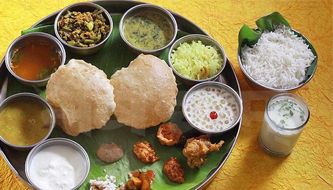
Accommodation
We offer Single Private and shared rooms.
The rooms have the facilities to suit the western lifestyle and we strive to make improvements according to comfortable staying.
Each room is arranged with a study table, chair, Double bed, and a storage closet to store your belongings.
We provide fresh pillow covers and bedsheet once a week.
Every room equipped with a nicely made washroom with all facilities like Toilet paper, Disposable bin, western toilet, washbasin to suit the western lifestyle.
The washroom are facilities with 24 hours hot & normal water.

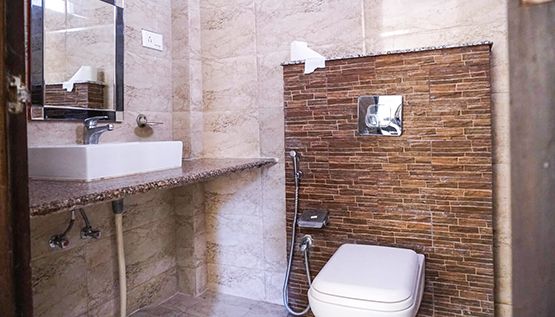
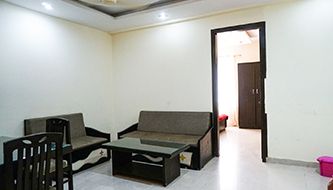
Our Yoga Course Benefits
- Learn Hatha-Yoga to deal with your mind and energy.
- Work with your Chakra through Hatha-Yoga.
- Practice more Nadi-Sodhana Pranayama, the only Pranayama in Indian traditional yogic system.
- Learn Pranayama for the Kundalini awakening.
- Get Pranayam sequence and schedule for your self-practice.
- Get proper knowledge about yogic gesture (mudra) and its practical use during yoga practice.
- Learn more Yoga Mudras from traditional yogic scriptures.
- Get personal attention to learn and practice yogic locks (Bandhas).
- Dissolve your knots, if you have by practicing different Yogic Locks and Pranayama.
- Learn the right techniques to develop a meditation technique yourself.
- Understand the meditation as a happening not as a practice.
- Learn the art of relaxation.
- Know the right technique to instant relax.
- Get the right techniques to designer short Yog -nidra methods for practical use.
- Arrange your subconscious mind by Yoga-nidra.
- Protect All negativities by Mantra Chanting.
- Discover the source of Intelligence
Frequently Asked Questions
Siddhant School of Yoga, one of authentic and result oriented yoga school in Rishikesh, India. We are providing high-quality yoga education and curriculum following the standards of Yoga Alliance USA.
Our 200-hour and 300-hour Yoga Teacher Training Course are certified by Yoga Alliance USA. We are providing a 500-hour Yoga TTC as it is a combination of 500 hours and 300 hours Yoga Program. After certification from Siddhant School of Yoga, you will be eligible to teach throughout the world as a Yoga teacher.
Note: After certification, you need to register yourself at Yoga Alliance to become an officially Registered Yoga Teacher (RYT)according to Yoga Alliance USA. The Yoga Alliance will charge almost $115 as the registration fees to register yourself as a yoga teacher. For your kind information more than 70000 Registered Yoga Teacher (RYT) and more than 30000 Registered Yoga Schools (RYS) you can find in Yoga Alliance family. So come be a part of a big and beautiful family of Yoga. For more information please visit www.yogaalliance.com.
The 'Right Attitude' is the only eligibility criteria to participate in a yoga course. If you have the right attitude, definitely you can join a yoga course and get the benefit for your growth. Besides this basic eligibility, you need to have some more practical eligibility to attend any kind of yoga program at Siddhant School of Yoga.
- 1- The applicant should be in a good physical condition.
- 2- Need to be open-mind and eagerness to understand and practice Yoga.
- 3- Dedication to practice 9 to10 hours daily with 100% attendance.
- 4- You must be a vegetarian during the yoga course.
- 5- Alcohol, drugs, and smoking are must not be allowed during the yoga course.
- 6- Need to know basic English.
- 7- Age group in-between 18 to 60 years.
- 8- Must not have any surgery for last one year.
- 9- Not allowed with any kids.
All these basic points are the eligibility criteria of yoga courses provided by Siddhant School of Yoga is really help you to understand and practice Yoga for your growth and success. Please go through all these points carefully before join a yoga course.
1. Two (2) color photocopy of your Passport are required, it should be very clear. Please be aware, you need to show the original Passport to us.
2. Two (2) color passport size photo is required, it should be very clear.
We need to know your Visa expiry date, as you got before arrival.
Let you remind that you are required an Indian Tourist Visa before traveling to India.
To arrival in India, you as a foreigner need a Visa. Give yourself some amount of time to arrange an Indian Tourist Visa from the Indian embassy or through the Visa services company before leaving your country and traveling to India. Please arrange your health and travel insurance and other important requirements like bank and credit card issues before leaving your home town and country.
You are most welcome to Siddhant School of Yoga. You can come to stay before one day, the starting date of the yoga course. Upon your arrival in our yoga school, you will provide your room to take rest and fresh. After some rest please come to the office and fill-up your course application form and deposit the rest of your course fees. Then you will get the current day and next day schedule and we will show all the areas, you are going to use throughout the yoga program, like Yoga Hall, Dining, etc.
On the starting day of the yoga course, you will provide a Hatha-Yoga class in the morning at 8:00 am to 9:00 am then you will have your breakfast. At 10:30 a.m. our fire-ceremony program, the traditional way to start any program in India. After that, we will take a group photo for your good memory and for official use and just after that, you will get your study-materials for your yoga TTC and then Lunch and rest.
At 3:00 pm, the starting day of the yoga course, we are conducting an orientation class to let you know all about the yoga course. Such as About teachers, syllabus, rule and regulations, food, accommodation, benefits, the right way to go through the Yoga course and many other things looking to the success of this Yoga Course.
In this orientation meeting, the students meet each other and get introduced the teachers to our new students. Here you will be asked about your expectations and goals so that we can help you accordingly during the yoga course. You can ask anything, whatever you want more or want to know about more in this Yoga Course, definitely, we will try our best to cooperate and provide to you. In this orientation session, you will get the 1st-week yoga course schedule and then after, the Yoga course starts officially along with the Ashtanga Yoga class in the evening.
You are most welcome to our school. We are providing everything to you related to Yoga education, food, and accommodation. We are here to help and serve you as a friend and family but it will be better to bring some useful things to help you and will be comfortable and convenient for you during yoga course.
You can bring your tablets, cameras, laptops and any other electronics products you are using for your easy and growing life. You should bring 2(two) passport size photographs for our record and certificate, mobile phone, cords of the electronic devices, ATM Debit Card (for the best exchange rate) clothes suits the seasons, comfortable clothes for practicing yoga, shoes, travel towel, first aid kit and basic medications and any personal belongings item. You may bring the musical instrument, mp3 player or anything else that you thinks is necessary. Please do not brings those things which are not useful and necessary during the travel or Yoga course, such as expensive jewelry and ornaments. If you bring, please be aware of your things and keep them safe. We are not responsible if any theft happens over here. However, Siddhant School of Yoga gives priority to your safety.
Course Registration
As you express you’re willing about doing yoga and ready to do
- First Send your inquiry to us.
- Our team send you a presentation of our yoga course as soon as we get your inquiry.
- Submit your Rregistration form below and pay $500 as registration fee which is non-refundable.
- Then finally we send you a confirmation email to you about confirm your booking.
Click the button below for quick registration.
If you have any query then feel free to contact us anytime. We are always there to assist you!
Course Fee: Shared Room : USD 2699 Private Room : USD 2999
Registration Fee: 400 USD
Refund Policy
All the students are advised to read the policy carefully before forwarding the application and the payment for the yoga teacher training course.
- The advance deposited for the course is non-refundable.
- In case of Emergency and unavoidable situation, students can postpone the course and go for any other month’s scheduled course within the current year. Students must inform us by the email with proper reason to postpone the course.
- If students cancel the course, we accept the cancelation but the advanced amount is non-refundable. There are no charges for cancellation but students have to inform us about the cancellation by email.
What's Our Students Say

Video Review


Understand your true indentity
This point is specially mentioned for a seeking attitude yoga practitioner. Actually, yoga is meant for you to find...

Measure your growth Step by Step
Learning and practicing yoga exactly one of the best steps towards a great life but are you aware of your practice weather is it on...

Result Oriented Yoga School
Siddhant School of Yoga Is a result oriented Yoga School in Rishikesh India. We are presenting YOGA as a science, if you practice ...

